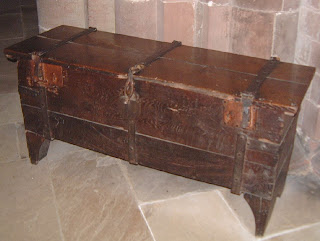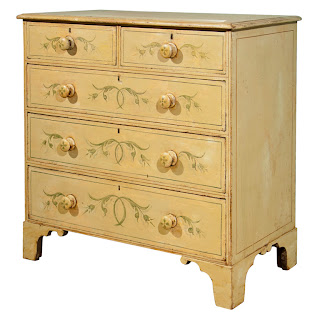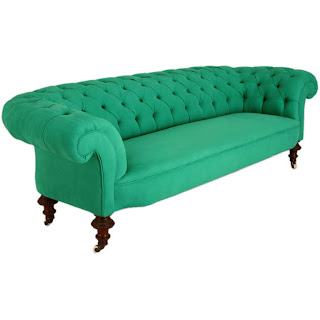A Little History About Chest of Drawers
The humble chest of drawers has evolved over many 100's of years. Its beginnings date back to Europe from as early as the 10th century. Starting life as a simple peg jointed box fitted with a thick plank top and held together by crudely made iron hinges. The English term for these chests were "Coffers".

A 16th Century Oak Coffer
As the years passed coffers were made more ornate depending on the persons wealth and stature until around the early 17th century when a simple drawer construction began to appear at the base of the coffer, these were then commonly known as “Mule Chests”


An Oak Mule Chest dating from 1700
Gradually after this time more and more drawers started to appear in chests giving us a very basic example of the chest of drawers we see and use today. The 18th and 19th centuries saw a huge progression in furniture production in Europe and chests of drawers were made grander and from fine woods even some lavishly inlaid with rare exotic woods. These chest became almost a status symbol of the time.

Gradually after this time more and more drawers started to appear in chests giving us a very basic example of the chest of drawers we see and use today. The 18th and 19th centuries saw a huge progression in furniture production in Europe and chests of drawers were made grander and from fine woods even some lavishly inlaid with rare exotic woods. These chest became almost a status symbol of the time.

A fine 19th century chest veneered in oysterwood
An English Chippendale Chinoiserie Chest on Chest circa 1830, offered by goldenassociatesantiques.com/
A Swedish Rococo period chest circa 1750, Offered by maisonandco.com/
Heading into the 20th century chest of drawers began to become massed produced throughout Europe and the world. Although some of the finer quality models were still made in good mahogany and walnut the majority were built on a production line from thin pine or softwood carcasses then veneered in cheaper mahogany, some low cost English chests were even painted to simulate veneers, these recently have become quite sought after as the majority were stripped of their painted finish and polished to pine.






Comments
Post a Comment